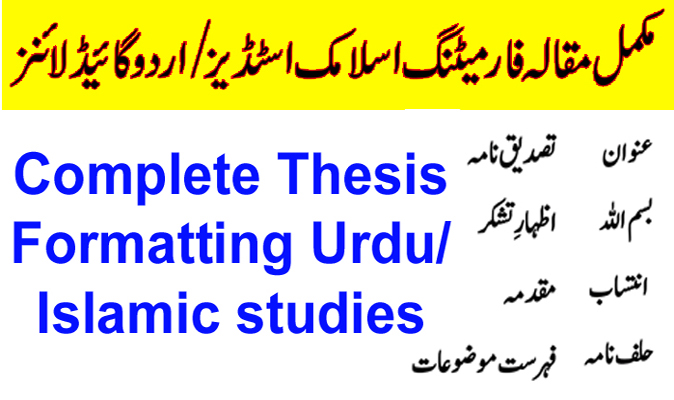In this article we describe the complete Guidelines of thesis formatting islamic studies / Urdu. in which we discuses page setup, font size, font style etc.
Introduction:
Thesis formatting is a critical aspect of academic writing, ensuring that scholarly work adheres to established standards and communicates ideas effectively. In the realm of Islamic Studies, where precision and attention to detail are paramount, adhering to proper formatting guidelines is especially crucial. This article aims to provide a comprehensive guide to thesis formatting in Islamic Studies, with a specific focus on Urdu guidelines. this setting in MS word.
Pak Urdu Installer
First you install Pak Urdu Installer. If you know how to install Pak Urdu Installer and Jameel Noori Nastaleeq, click the link.
How to Install Pak Urdu Installer and font
Page Setup
First of all we set the page setup. Set Page size is A4. Navigate to Layout > Size > A4.
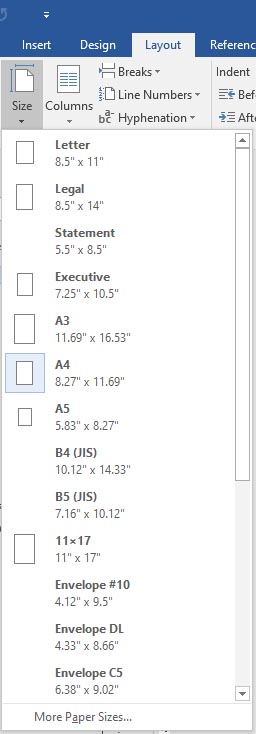
set page size after we set the margins of the page. in which Top margin 1.25″, Bottom margin 0.75″, Left margin 1″ and Right margin 1.5″.
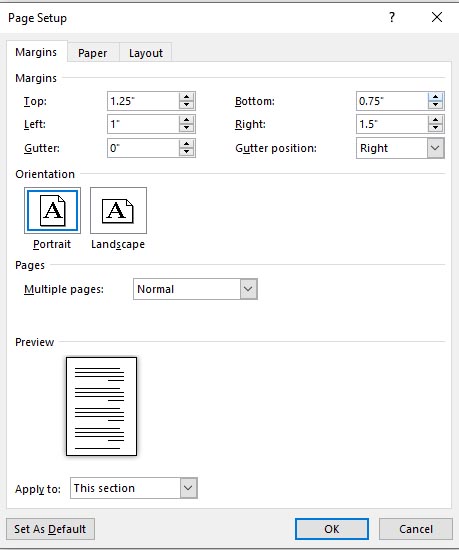
Structural Elements of an Islamic Studies Thesis
Structural elements play a crucial role in shaping the coherence and organization of an Islamic Studies thesis. Here are the key components you should consider:

Title Page
- The title page is the first impression of your thesis. It should include the title of your thesis, your name, institutional affiliation, department, and the date of submission.
- Ensure that the title is clear, concise, and reflects the essence of your research.
- In this thesis two title page first for the binging and second for the thesis copy. I describe the complete detail font size, font style etc.
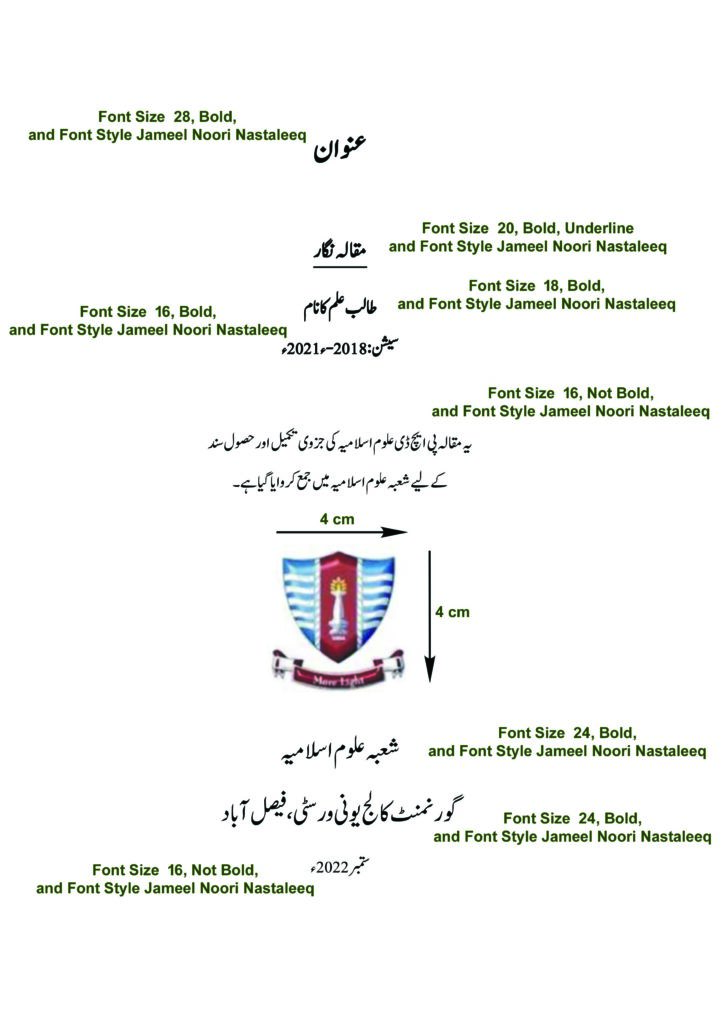
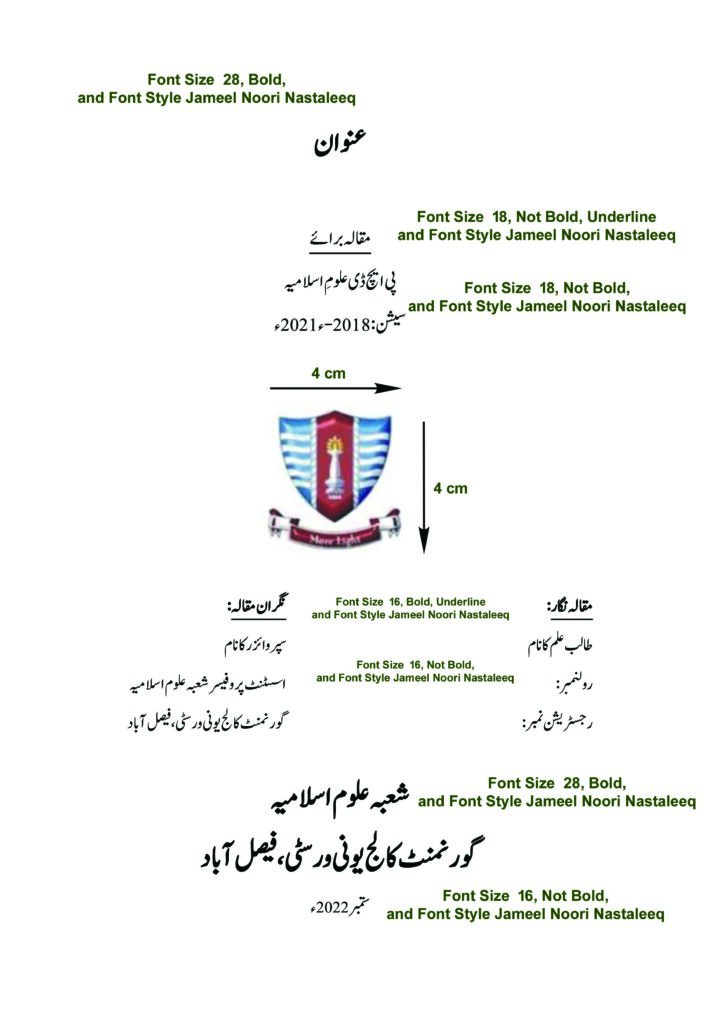
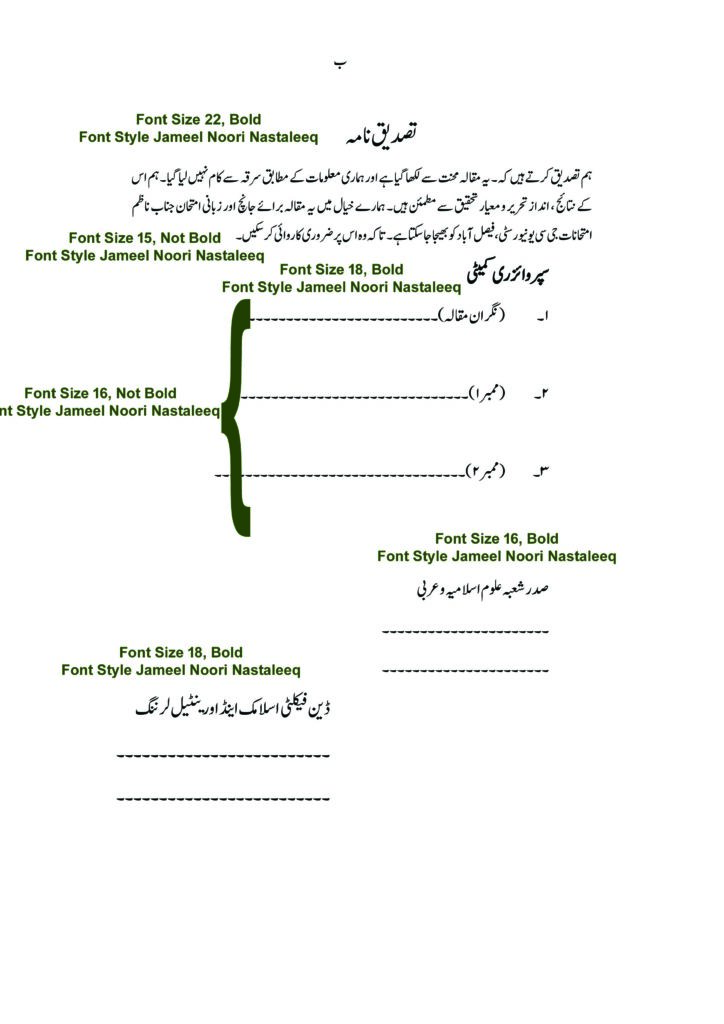
Thesis Formatting Islamic Studies
Complete Guidelines of thesis formatting islamic studies. below mention complete the starting page. in the above mention all the page and font size, font style and font name.
Page Layout:
- Standard letter-sized page A4 (8.5 x 11 inches)
- Top margin 1.25″, Bottom margin 0.75″, Left margin 1″ and Right margin 1.5″.
Font Size and Style:
- Title: 28-point, Jameel Noori Nastaleeq, Bold
- Author’s Name: 18-point, Jameel Noori Nastaleeq, Bold
- Institutional Affiliation and Department: 16-point, Jameel Noori Nastaleeq
- Date of Submission: 16-point, Jameel Noori Nastaleeq
Content:
- Top of the page: Title of the thesis centered, using appropriate capitalization
- Middle of the page:
- Author’s name centered below the title
- Institutional affiliation and department centered below the author’s name
- Date of submission centered below the institutional information
Typing Directions
FOR BS
- Main Heading (Heading 1): 27-point, Jameel Noori Nastaleeq, Bold
- Sub Heading (Heading 2): 23-point, Jameel Noori Nastaleeq, Bold
- Paragraph Font: 17-point, Jameel Noori Nastaleeq, Not Bold
- References Font: 16-point, Jameel Noori Nastaleeq, Not Bold
FOR MA
- Main Heading (Heading 1): 27-point, Jameel Noori Nastaleeq, Bold
- Sub Heading (Heading 2): 23-point, Jameel Noori Nastaleeq, Bold
- Paragraph Font: 17-point, Jameel Noori Nastaleeq, Not Bold
- References Font: 16-point, Jameel Noori Nastaleeq, Not Bold
FOR M.Phil
- Main Heading (Heading 1): 26-point, Jameel Noori Nastaleeq, Bold
- Sub Heading (Heading 2): 22-point, Jameel Noori Nastaleeq, Bold
- Paragraph Font: 16-point, Jameel Noori Nastaleeq, Not Bold
- References Font: 15-point, Jameel Noori Nastaleeq, Not Bold
FOR P.hD
- Main Heading (Heading 1): 25-point, Jameel Noori Nastaleeq, Bold
- Sub Heading (Heading 2): 21-point, Jameel Noori Nastaleeq, Bold
- Paragraph Font: 15-point, Jameel Noori Nastaleeq, Not Bold
- References Font: 14-point, Jameel Noori Nastaleeq, Not Bold
Conclusion:
In conclusion, adhering to proper thesis formatting in Islamic Studies, with a focus on Urdu guidelines, is indispensable for presenting scholarly work with clarity and precision. By paying meticulous attention to structural elements, language nuances, and citation styles, researchers can ensure that their contributions to Islamic Studies are not only intellectually robust but also visually and linguistically impeccable. This comprehensive guide serves as a roadmap for scholars seeking to navigate the intricate landscape of thesis formatting in the realm of Islamic Studies.

